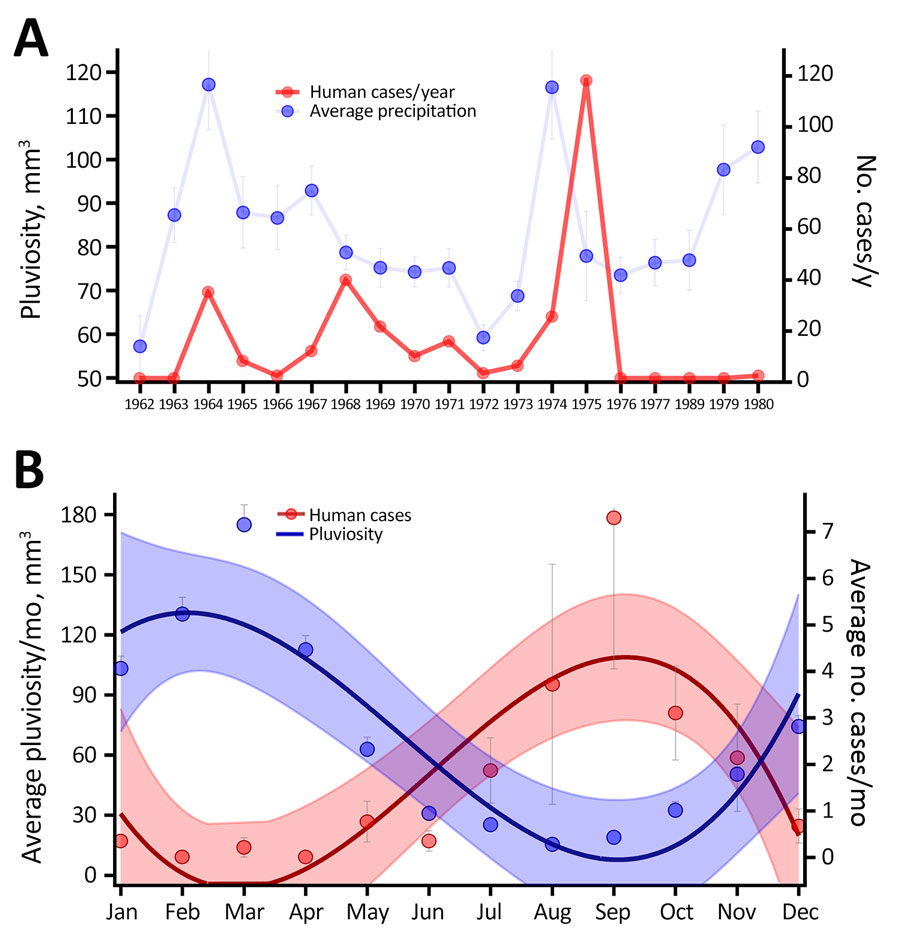Volume 30, Number 9—September 2024
Research
Ecologic, Geoclimatic, and Genomic Factors Modulating Plague Epidemics in Primary Natural Focus, Brazil
Figure 3

Figure 3. Effects of climatic variables on human cases in a study of ecologic, geoclimatic, and genomic factors modulating plague epidemics in primary natural focus, Brazil. A) Yearly average pluviosity (rainfall amount); B) monthly average pluviosity. Dots indicate averages; whiskers indicate upper and lower limits. Average pluviosity (mm3) was measured in municipalities in the state of Pernambuco in the Araripe Plateau region during 1962–1980. The curves in panel B represent the third order polynomial interpolation of cases and pluviosity averages; shaded areas indicate 95% CIs.
Page created: July 11, 2024
Page updated: August 22, 2024
Page reviewed: August 22, 2024
The conclusions, findings, and opinions expressed by authors contributing to this journal do not necessarily reflect the official position of the U.S. Department of Health and Human Services, the Public Health Service, the Centers for Disease Control and Prevention, or the authors' affiliated institutions. Use of trade names is for identification only and does not imply endorsement by any of the groups named above.